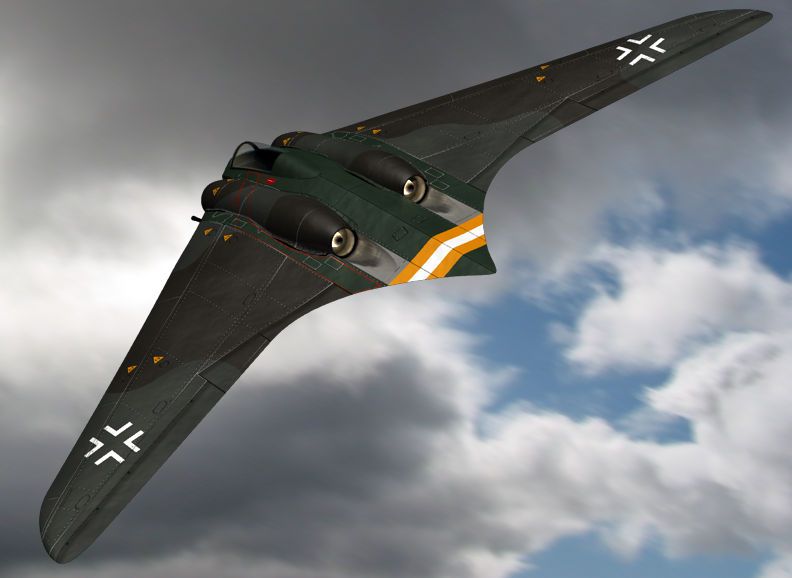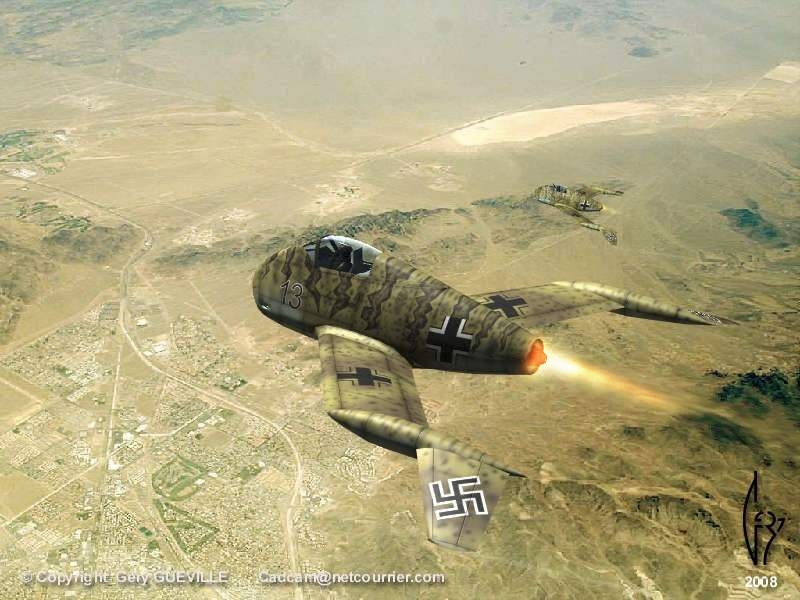bulgarisher
Горд Б'лгарин
- Член од
- 20 јануари 2009
- Мислења
- 43
- Поени од реакции
- 9
Сите стратегички бомбардери од ново поколение кои ги има америка са копирани и плагиатствани от секретните оружија на третиот рајх това се однесува и за авионите сичко е копирано от WunderWaffen.
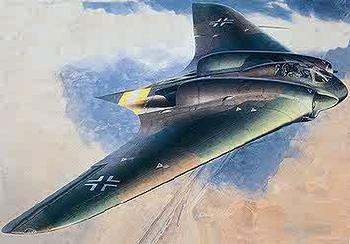
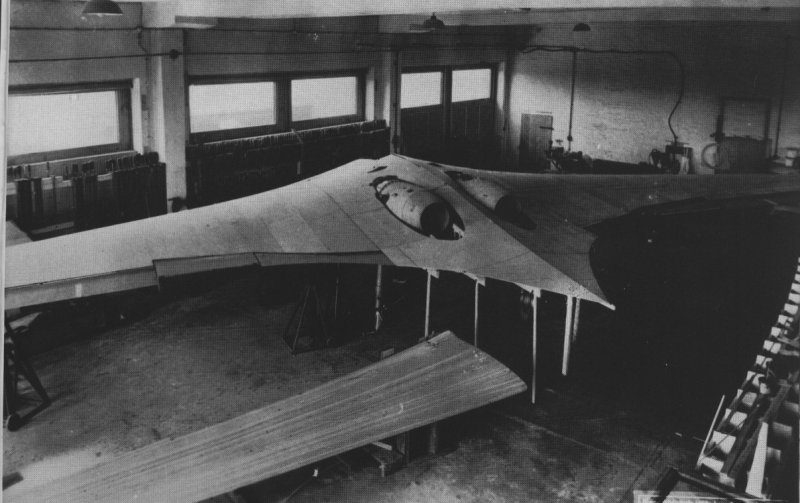


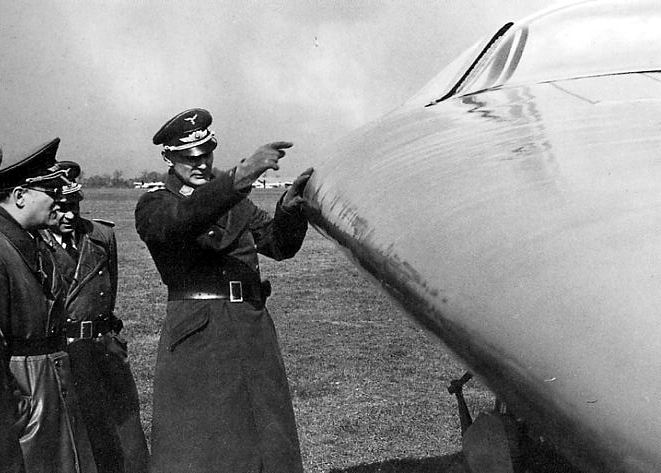


In the early 1930s, the Horten brothers had become interested in the flying wing design as a method of improving the performance of gliders. The German government was funding glider clubs at the time because production of military aircraft was forbidden by the Treaty of Versailles after World War I. The flying wing layout removes any "unneeded" surfaces and, in theory at least, leads to the lowest possible drag. A wing-only configuration allows for a similarly performing glider with wings that are shorter and thus sturdier, and without the added drag of the fuselage.
In 1943, Reichsmarschall Göring issued a request for design proposals to produce a bomber that was capable of carrying a 1,000 kg (2,200 lb) load over 1,000 km (620 mi) at 1,000 km/h (620 mph); the so called 3 X 1000 project. Conventional German bombers could reach Allied command centers in Great Britain, but were suffering devastating losses from Allied fighters. At the time there was simply no way to meet these goals — the new Jumo 004B turbojets could give the required speed but had excessive fuel consumption.
The Hortens felt that the low-drag flying wing design could meet all of the goals: by reducing the drag, cruise power could be lowered to the point where the range requirement could be met. They put forward their private project, the Ho IX, as the basis for the bomber. The Government Air Ministry (Reichsluftfahrtministerium) approved the Horten proposal but ordered the addition of two 30 mm cannon, as they felt the aircraft would also be useful as a fighter due to its estimated top speed being significantly higher than that of any Allied aircraft.
 http://en.wikipedia.org/wiki/File:Horton-GO229-front.jpg
http://en.wikipedia.org/wiki/File:Horton-GO229-front.jpg
Horten Ho 229 V3 prototype at the Smithsonian's Garber restoration facility (National Air and Space Museum)
The first Ho IX V1, which was an unpowered glider, flew on 1 March 1944. It was followed in December 1944 by the Jumo 004-powered Ho IX V2 (the BMW 003 engine was preferred but unavailable at the time). Göring believed in the design and ordered a production series of 40 aircraft at Gotha with the RLM designation Ho 229 before it had taken to the air under jet power. The program was undeterred when the sole Ho IX V2 crashed after an engine caught fire on 18 February 1945 after only two hours of flying time. An order was put in for further prototypes and 20 pre-production aircraft. On 12 March 1945, Ho 229 was included into the Jäger-Notprogramm for accelerated production of inexpensive "wonder weapons."
 http://en.wikipedia.org/wiki/File:Horton-GO229-rear.jpg
http://en.wikipedia.org/wiki/File:Horton-GO229-rear.jpg
Rear view of Horten Ho 229 prototype
During the final stages of the war, the US military initiated Operation Paperclip which was an effort by the various intelligence agencies to capture advanced German weapons research, and to deny that research to advancing Soviet troops. A Horten glider and the Ho 229 V3, which was undergoing final assembly, were secured and sent to Northrop Corporation in the United States for evaluation. Northrop was chosen because of their experience with flying wings—inspired by the Horten brothers' pre-war record-setting glider. Jack Northrop had been building flying wings since the N-1M in 1939.
Northrop's small single-seater prototype (N9M-B) and a Horten flying wing glider (Ho IV) are located in the Planes of Fame museum in Southern California. The only surviving Ho 229 airframe, the V3, is located at the National Air and Space Museum's Paul E. Garber Facility in Suitland, Maryland. Five partial airframes found at the Gothaer Wagonfabrik factory assembly line were destroyed by soldiers of U.S. VIII Corps of General Patton's Third Army in April 1945 to prevent capture by the advancing Soviet forces
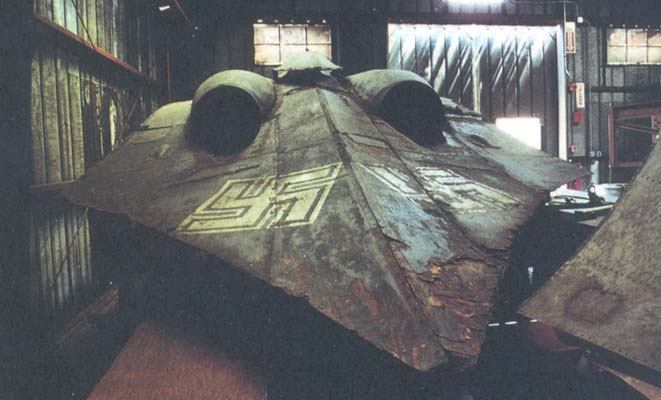
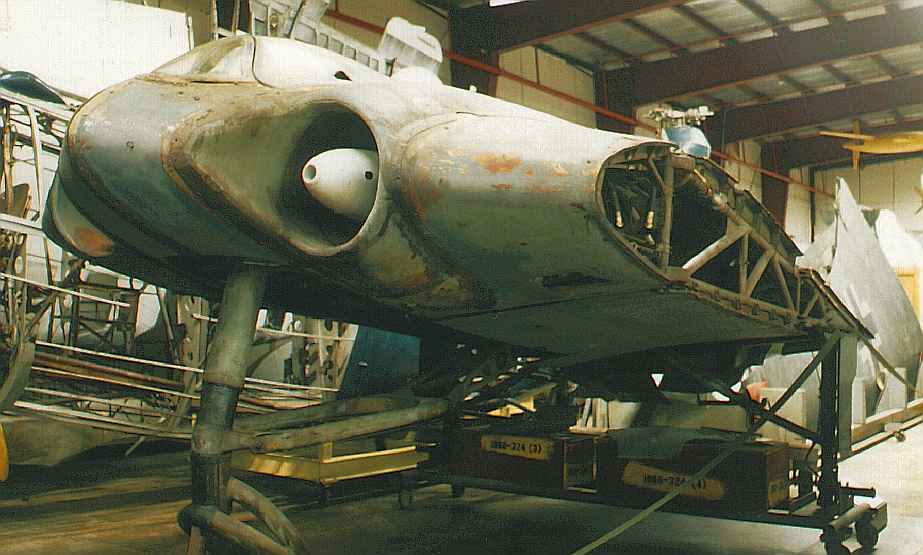
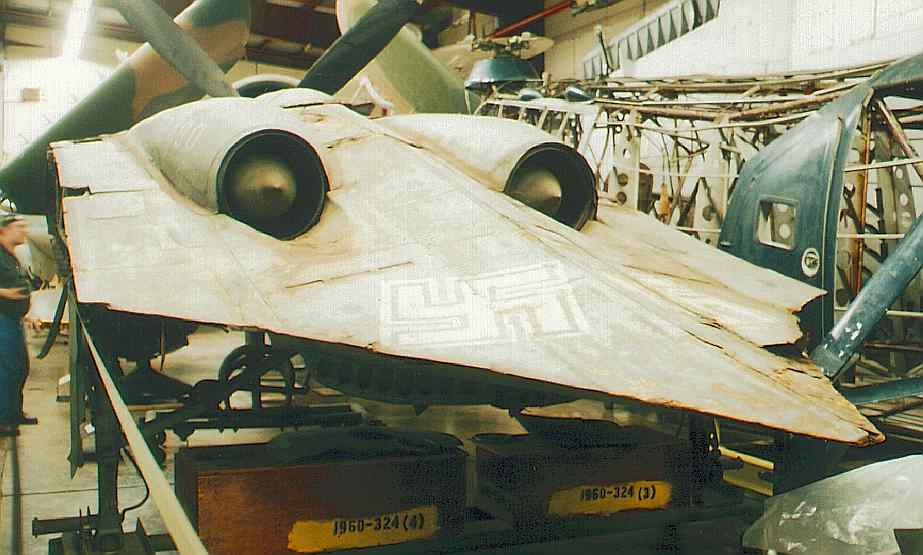







In the early 1930s, the Horten brothers had become interested in the flying wing design as a method of improving the performance of gliders. The German government was funding glider clubs at the time because production of military aircraft was forbidden by the Treaty of Versailles after World War I. The flying wing layout removes any "unneeded" surfaces and, in theory at least, leads to the lowest possible drag. A wing-only configuration allows for a similarly performing glider with wings that are shorter and thus sturdier, and without the added drag of the fuselage.
In 1943, Reichsmarschall Göring issued a request for design proposals to produce a bomber that was capable of carrying a 1,000 kg (2,200 lb) load over 1,000 km (620 mi) at 1,000 km/h (620 mph); the so called 3 X 1000 project. Conventional German bombers could reach Allied command centers in Great Britain, but were suffering devastating losses from Allied fighters. At the time there was simply no way to meet these goals — the new Jumo 004B turbojets could give the required speed but had excessive fuel consumption.
The Hortens felt that the low-drag flying wing design could meet all of the goals: by reducing the drag, cruise power could be lowered to the point where the range requirement could be met. They put forward their private project, the Ho IX, as the basis for the bomber. The Government Air Ministry (Reichsluftfahrtministerium) approved the Horten proposal but ordered the addition of two 30 mm cannon, as they felt the aircraft would also be useful as a fighter due to its estimated top speed being significantly higher than that of any Allied aircraft.
 http://en.wikipedia.org/wiki/File:Horton-GO229-front.jpg
http://en.wikipedia.org/wiki/File:Horton-GO229-front.jpgHorten Ho 229 V3 prototype at the Smithsonian's Garber restoration facility (National Air and Space Museum)
The first Ho IX V1, which was an unpowered glider, flew on 1 March 1944. It was followed in December 1944 by the Jumo 004-powered Ho IX V2 (the BMW 003 engine was preferred but unavailable at the time). Göring believed in the design and ordered a production series of 40 aircraft at Gotha with the RLM designation Ho 229 before it had taken to the air under jet power. The program was undeterred when the sole Ho IX V2 crashed after an engine caught fire on 18 February 1945 after only two hours of flying time. An order was put in for further prototypes and 20 pre-production aircraft. On 12 March 1945, Ho 229 was included into the Jäger-Notprogramm for accelerated production of inexpensive "wonder weapons."
 http://en.wikipedia.org/wiki/File:Horton-GO229-rear.jpg
http://en.wikipedia.org/wiki/File:Horton-GO229-rear.jpgRear view of Horten Ho 229 prototype
During the final stages of the war, the US military initiated Operation Paperclip which was an effort by the various intelligence agencies to capture advanced German weapons research, and to deny that research to advancing Soviet troops. A Horten glider and the Ho 229 V3, which was undergoing final assembly, were secured and sent to Northrop Corporation in the United States for evaluation. Northrop was chosen because of their experience with flying wings—inspired by the Horten brothers' pre-war record-setting glider. Jack Northrop had been building flying wings since the N-1M in 1939.
Northrop's small single-seater prototype (N9M-B) and a Horten flying wing glider (Ho IV) are located in the Planes of Fame museum in Southern California. The only surviving Ho 229 airframe, the V3, is located at the National Air and Space Museum's Paul E. Garber Facility in Suitland, Maryland. Five partial airframes found at the Gothaer Wagonfabrik factory assembly line were destroyed by soldiers of U.S. VIII Corps of General Patton's Third Army in April 1945 to prevent capture by the advancing Soviet forces







